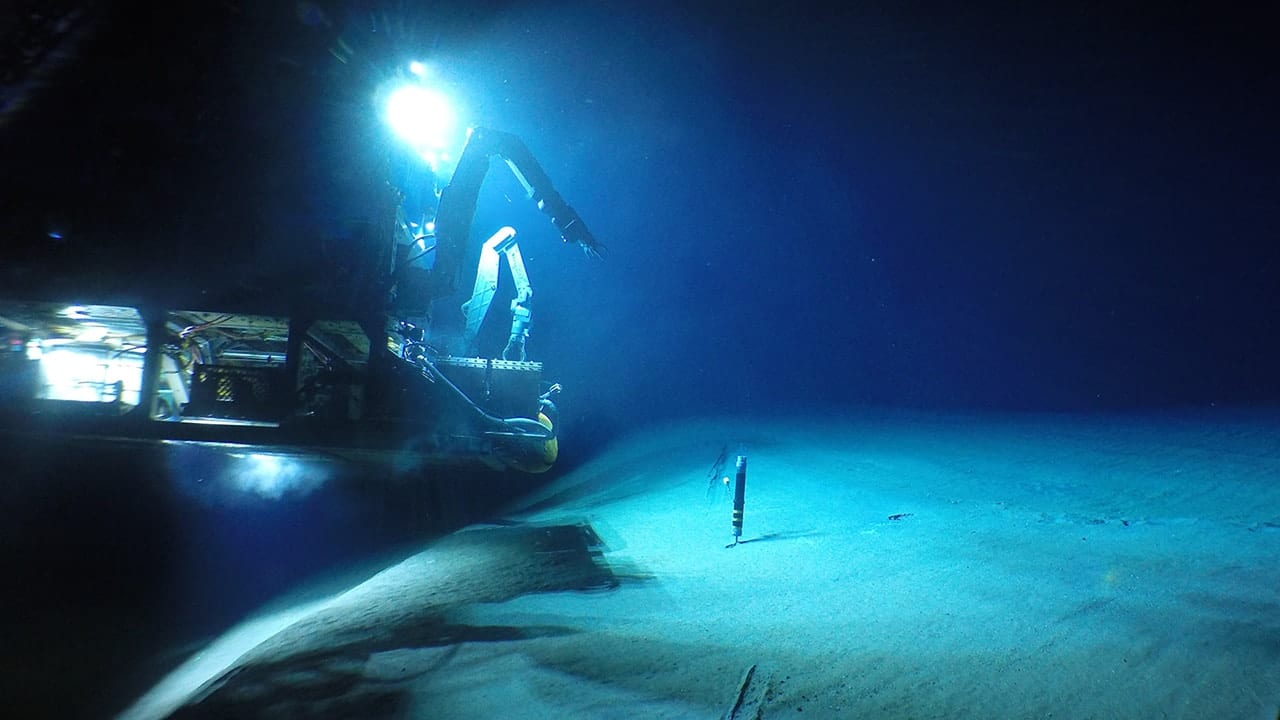TRANSCRIPT
Chapter 9 Fleet Oceanographic and Acoustic Reference Manual,RP 33, Naval Oceanographic Office, Stennis Space Center, MS, 1989. Navy Oceanographic Data Distribution System Products Manual. –RP-33, Fleet Oceanographic and Acoustic Reference Manual. Oceanographic Support Manual. Fleet Weather Center Norfolk 6 EIDWS Common Core 114 METOC.
Start studying RP 33, FLEET OCEANOGRAPHIC AND ACOUSTIC REFERENCE MANUAL. Learn vocabulary, terms, and more with flashcards, games, and other study tools.

Prepared under the authority ofCommanderNaval Meteorology andOceanography Command
Naval Oceanographic OfficeStennis Space Reference PublicationCenter RP 33MS 39522-5001 July 1986, Revised April 1999
RP 33
Distribution limited to DOD and DOD contractors only;administrative/operational use; April 1999. Otherrequests for this document shall be referred toCommanding Officer, Naval Oceanographic Office.
FLEET OCEANOGRAPHIC AND ACOUSTICREFERENCE MANUAL
Littoral - defined as the region whichhorizontally encompasses the land/watermassinterface from fifty (50) statute miles ashore totwo hundred (200) nautical miles at sea;extends vertically from the bottom of theocean to the top of the atmosphere and fromthe land surface to the top of the atmosphere.
FOREWORDThis Naval Oceanographic Office (NAVOCEANO) publication supercedes Reference
Publication RP 33, Fleet Oceanographic and Acoustic Reference Manual, dated June 1992. It isa reference manual covering the basic acoustic, geologic, and physical structure of the deep andshallow ocean environment.
It is designed to provide a basic knowledge of the ocean environment for fleet users sothat they may effectively apply Naval Meteorology and Oceanography Command instructions,procedures, and products.
REPORT DOCUMENTATION PAGE(Independently formatted for digital media)
Form ApprovedOMB No. 0704-0188
Public reporting burden for this collection is estimated to average 1 hour per response, including the time for reviewing instructions, searchingexisting data sources, gathering and maintaining the data needed, and completing and reviewing the collection of information. Send commentsregarding this burden estimate or any other aspect of this collection of information, including suggestions for reducing this burden, to WashingtonHeadquarters Services, Directorate for Information Operations and Reports, 1215 Jefferson Davis Highway, Suite 1204, Arlington, VA 22202-4302, and to the Office of Management and Budget, Paperwork Reduction Project (0704-0188), Washington, D.C. 20503.1. AGENCY USE ONLY 2. REPORT DATE
April 19993. REPORT TYPE AND DATES COVERED Reference Publication
4. TITLE AND SUBTITLE Fleet Oceanographic and Acoustic Reference Manual
5. Funding Numbers
6. AUTHORS Naval Oceanographic Office, Code N72, Claimancy Training Division, Tactical Support Branch
7. PERFORMING ORGANIZATION NAME(S) AND ADDRESS(ES) Commanding Officer 1002 Balch Blvd. Naval Oceanographic Office Stennis Space Center, MS 39522-5001
8. PERFORMINGORGANIZATION REPORTNUMBER
RP 33
9. SPONSORING/MONITORING AGENCY NAME(S) AND ADDRESS(ES) Commander Naval Meteorology and Oceanography Command 1020 Balch Blvd. Stennis Space Center, MS 39529-5000
10.SPONSORING/MONITORINGAGENCY REPORT NUMBER
11. SUPPLEMENTARY NOTES
First edition in July 1986 with revisions in March 1989, June 1992, and April 1999. The inclusion of names of any specificproduct, commodity, or service in this publication is for information purposes only and does not imply endorsement by the Navy,NAVOCEANO, or COMNAVMETOCCOM.
12a. DISTRIBUTION/AVAILABILITY STATEMENT Distribution limited to DOD and DOD contractors only; administrative/operational use;April 1999. Other requests shall be referred to Commanding Officer, Naval Oceanographic Office.
12b. DISTRIBUTIONCODE
13. ABSTRACT (Maximum 200 words)
This publication is designed for use by the meteorology and oceanography (METOC) community and Fleet operators tofamiliarize themselves with acoustic and oceanographic information for application to naval operations. Specific subjects arecovered by chapter with references, definitions, and acronyms provided in appendices.
14. SUBJECT TERMS
Acoustics, Underwater Sound, Sound Speed Profile, Propagation Loss Curve, Ambient Noise,Topographic Noise Stripping, Submerged Convergence Zone, Fronts, Eddies, Marine Geology,Bathythermograph, Figure of Merit, Wind, Waves, Cutoff Frequency, Wavelength, Secondary SoundChannel, USW, ASW, Half Channel, Diffraction, Surface Duct, Bioluminescence, Sound Intensity,Sonar, Littoral Water, Shallow Water.
15. NUMBER OF PAGES
16. PRICE CODE
17. SECURITY CLASSIFICATION OF REPORT 18. SECURITY CLASSIFICATION OFTHIS PAGE
19. SECURITY CLASSIFICATION OFABSTRACT
20. LIMITATION OFABSTRACT
UNCLASSIFIED UNCLASSIFIED UNCLASSIFIED UL
Standard Form 298 (Rev. 2-89)Prescribed by ANSI Std. 239-18
298-102
iii
Table of Contents
Page
Foreword
Report Documentation Page
Chapter 1 The Nature of Underwater Sound ............................................................1
1.1 Elementary Aspects of Sound..................................................................1
1.1.1 Wave Motion............................................................................................1
1.1.2 Acoustic Energy vs. Electromagnetic Energy ..........................................2
1.1.3 Speed of Sound .......................................................................................2
1.1.4 Refraction ................................................................................................4
1.1.4.1 Ray Paths ................................................................................................4
1.1.4.2 Snell's Law...............................................................................................5
1.1.4.3 Sound-Speed Gradient ............................................................................6
1.1.4.3.1 Positive Sound-Speed Gradient...............................................................7
1.1.4.3.2 Negative Sound-Speed Gradient .............................................................7
1.1.4.3.3 Isospeed ..................................................................................................7
1.1.4.3.4 Acoustic Reciprocity ................................................................................8
Chapter 2 Propagation Loss.....................................................................................9
2.1 Introduction..............................................................................................9
2.2 Spreading Loss......................................................................................10
2.2.1 Spherical Spreading ..............................................................................10
2.2.2 Cylindrical Spreading.............................................................................11
2.2.3 Dipolar Spreading ..................................................................................12
iv
2.3 Absorption..............................................................................................13
2.4 Scattering (Reverberation).....................................................................142.4.1 Surface Reverberation...........................................................................14
2.4.2 Volume Reverberation ..........................................................................15
2.4.3 Bottom Reverberation............................................................................16
2.5 Bottom Loss...........................................................................................16
2.5.1 Bottom Interaction..................................................................................16
2.5.2 Factors of Frequency and Grazing Angle ..............................................17
2.5.3 Bottom-Loss Data Bases .......................................................................17
Chapter 3 Background Noise .................................................................................19
3.1 General ..................................................................................................19
3.2 Ambient Noise .......................................................................................19
3.2.1 Surface-Ship Traffic Noise.....................................................................19
3.2.2 Sea-State Noise.....................................................................................20
3.2.2.1 Wind-Generated Noise ..........................................................................24
3.2.2.2 Sea-State Noise Levels .........................................................................24
3.2.3 Other Ambient-Noise Sources ...............................................................24
3.2.3.1 Precipitation ...........................................................................................24
3.2.3.2 Ice..........................................................................................................24
3.2.3.3 Biologics ................................................................................................24
3.2.3.3.1 Marine Mammals ...................................................................................25
3.3 Self-Noise ..............................................................................................28
3.3.1 Machinery Noise ....................................................................................28
v3.3.2 Propeller Noise ......................................................................................28
3.3.3 Hydrodynamic Noise..............................................................

